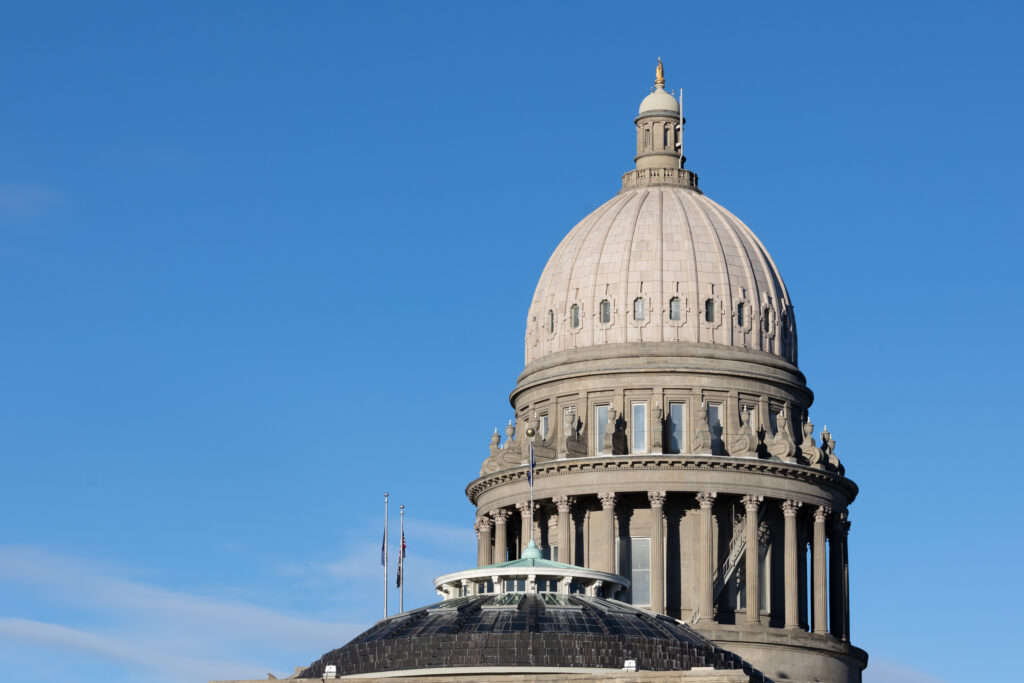Idaho State Capitol building on January 11, 2023. (Otto Kitsinger for Idaho Capital Sun)
With the state facing an estimated $45.8 million in wildfire expenses so far this season, Idaho Gov. Brad Little and other state officials are discussing the need to replenish the fund before next year.
During the last legislative session, the state pre-funded its emergency fire suppression fund at about $68 million, Idaho Department of Lands Director Dustin Miller said Tuesday. Miller briefed Little and other state officials Tuesday during a meeting of the State Board of Land Examiners at the Idaho State Capitol in Boise.
Dustin Miller is the director of the Idaho Department of Lands. (Courtesy of the Idaho Department of Lands)
So far this year, the state has spent an estimated $51.1 million, about $5.2 million of which is reimbursable costs, Miller said. That leaves the state on the hook for about $45.8 million so far.
“Here we are, mid-September, we’ve got rain,” Miller said. “Things are winding down, but that doesn’t mean we’re out of the woods yet. But I’m confident that we will not go past that amount that’s been pre-funded. But certainly we would welcome any opportunity to have that conversation about pre-funding this suppression account again ahead of the next legislative session.”
The state may also incur other cost-share expenses for fires that are burning primarily on federal land but also include acres of state lands or other parcels the state is responsible for, Miller said.
GET THE MORNING HEADLINES DELIVERED TO YOUR INBOX
Idaho governor calls on federal government to do more to contain, manage wildfires
By comparison, the state’s net fire expenses a year ago in September 2023 were just $14.6 million, according to Idaho Department of Lands documents.
Little asked for updates on wildfire expenses Tuesday. He also expressed frustration that large fires burning on federal lands, such as the Wapiti Fire that has been burning near Stanley and Idaho Highway 21 since July 24, were not contained early and then became large wildfires.
“They have got to do more containment, and they’ve got to do more management,” Little said.
One thing officials can do is cut and remove dead trees, Little said. During the meeting, Little said a small mill wanted access to dead lodgepole pine trees near Stanley, but was denied by the U.S. Forest Service.
“We’re going to have to make our case to the public about if they don’t like smoke and they don’t like mercury in the air and they don’t like fish habitat being destroyed, the Forest Service is going to have to up their game for management,” Little said.
The Idaho Legislature will decide whether to approve additional pre-funding for the emergency fire suppression fund once the 2025 legislative session convenes in January.
If the Idaho Legislature does not pre-fund the emergency fire fund, Idaho Department of Lands officials can still fight wildfires next year, but they would need to bring their bills to the Idaho Legislature after the fact in 2026 as supplemental requests or warrants.
“To the extent a move to pre-fund the (fire) suppression account can happen again, that would be very welcomed,” Miller told Little. “That provides us with that security that those funds are there. Otherwise, we still spend the money, but then go back and ask the Legislature to cover the bills for us, of course. So pre-funding is always a good idea.”
SUPPORT NEWS YOU TRUST.

